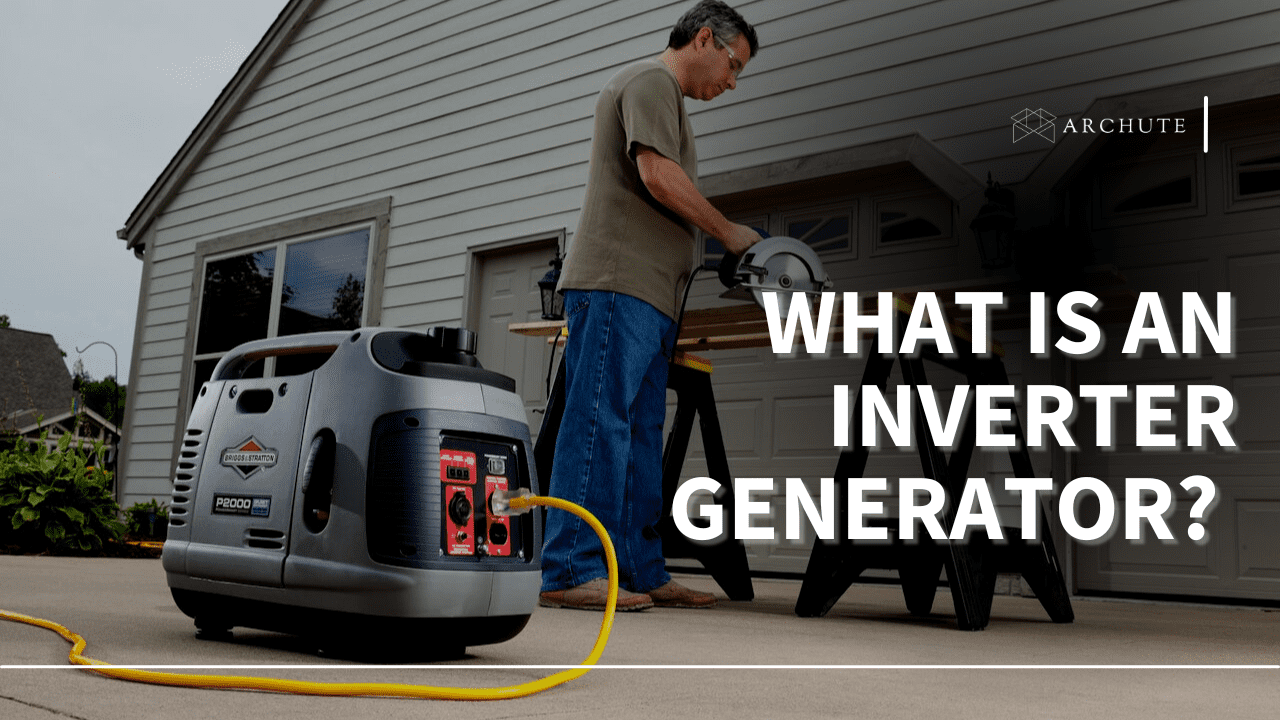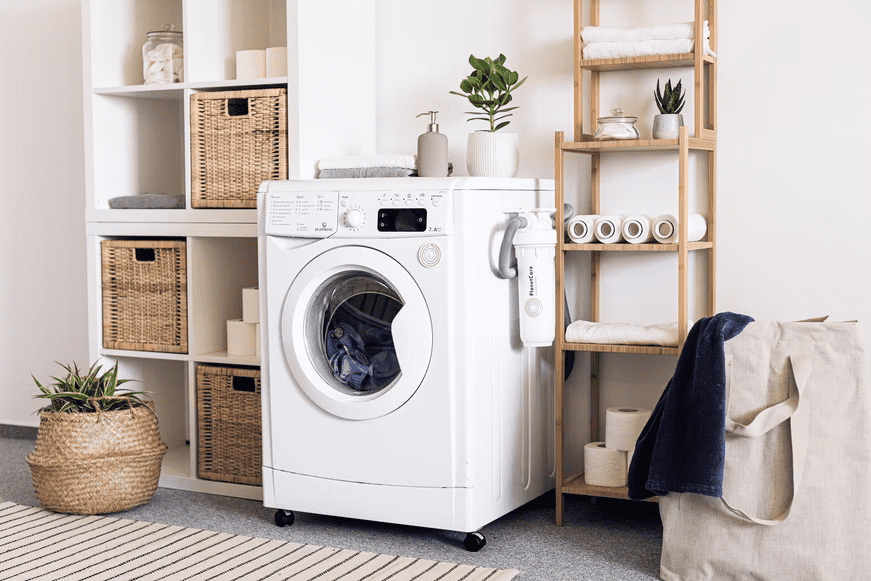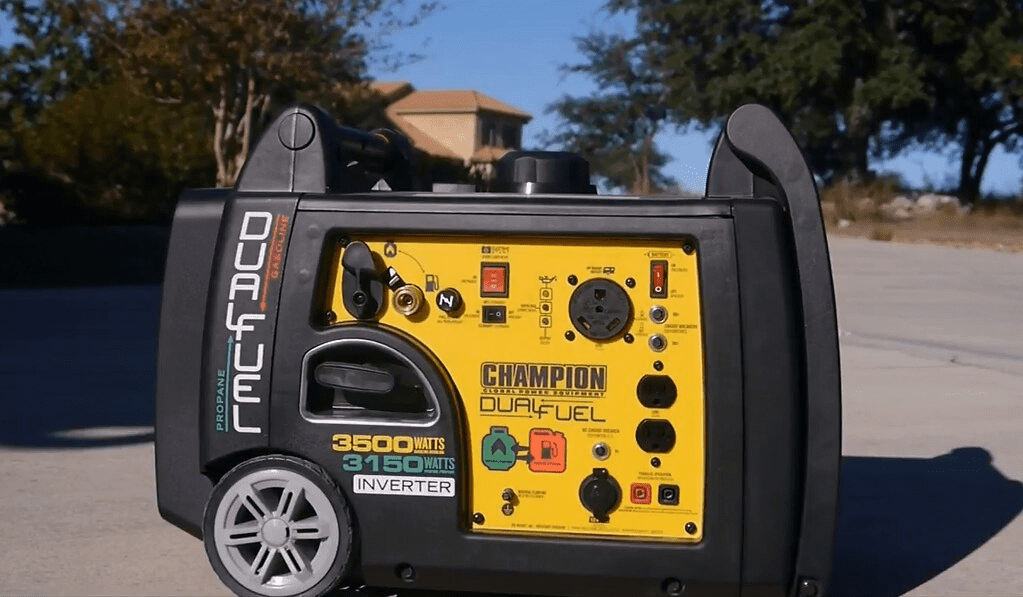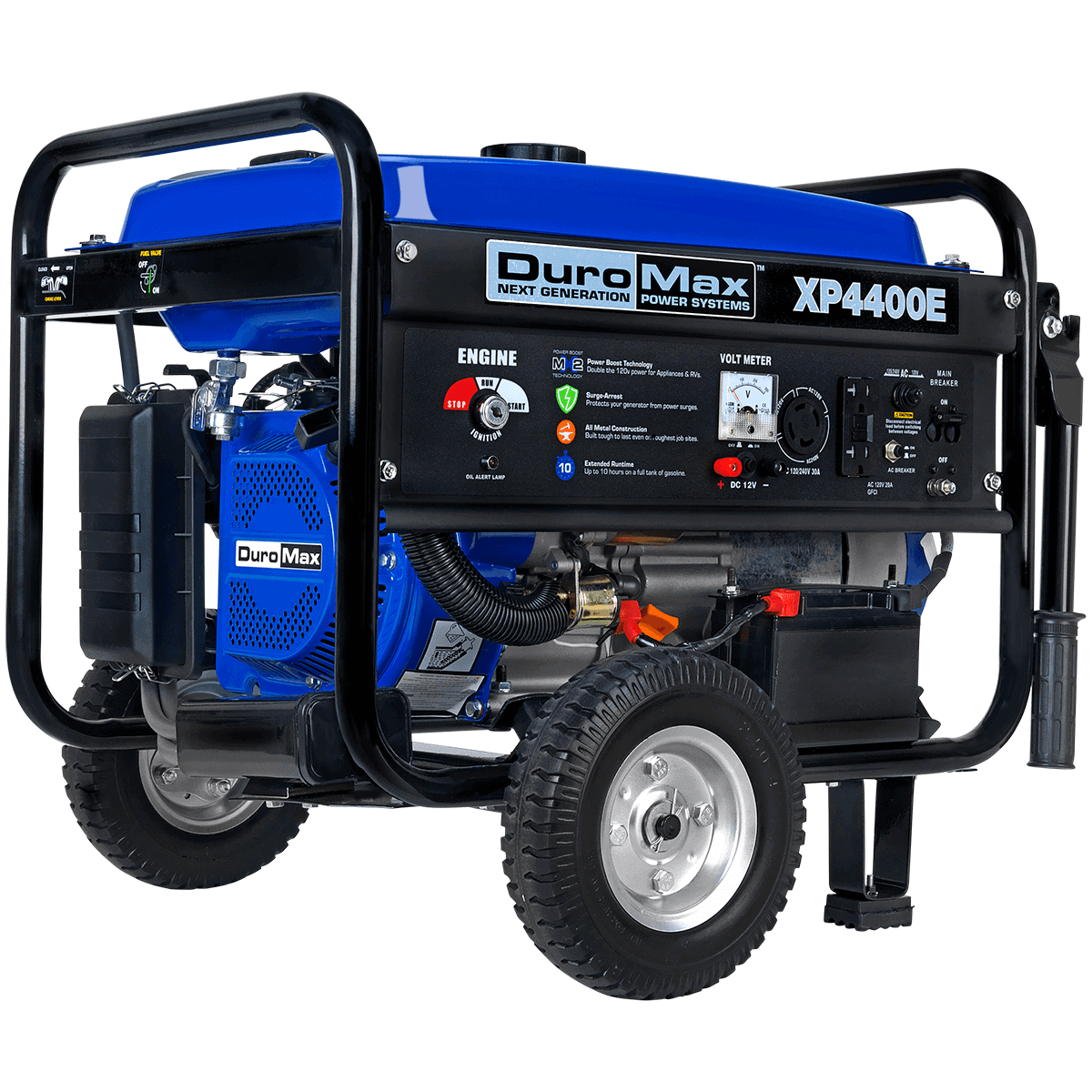There are different types of generators out there on the market; such options include, standby, portable, standard, inverter and so on. Hence, we need to know – what is an inverter generator? This article has the needed information which offers a real insight into the technology in question, the main area of focus being this technology and its functionality.
First of all, we would give an overview of how generators produce electricity.
What Is a Generator?
The fact that traditional generators have been around for a long time is the major cause of their wide spread use today. Nevertheless, they keep all the features the same. Generators are machines that change mechanical or chemical energy into electricity. Engine and the alternator are the two most main parts of a generator.
They get power from either diesel, gasoline or our (preferred fuel) propane / LPG. The power from the fuel drives a motor connected to an alternator that provides the electricity. The rotor and stator is the main parts of alternator.
For the generator to to generate the necessary electrical current, it like generators, the motor to run continuously at a steady speed (mostly 3600 rpm).

Image Credits: media-www.canadiantire.ca
In order to have the same engine speed (rpm) for the sake of maintaining electrical frequency (Hertz), it should not change. This electrical power is then submitted to the control panel which is being used to power all the tools and gadgets.
What Is an Inverter Generator?
Inverters generators are the new source of energy that has been of great significance in the power industry in the last decade as they produce clean, consistent power without the noise of soundproof enclosures. The unit can work at 120 or 240 volts.
Alternators and generators are alike in many ways, but there is one essential difference. In an alternator, the DC power excites the rotor so that a powerful magnetic field is created in the rotor. As the stator cuts off these magnetic fields from the rotor, the rotor begins to rotate and energy is generated and is collected by the stator.
The Operation of an Inverter Generator
The mechanics of a inverter generator is somewhat more complicated compared to a conventional portable generator as extra elements are involved and generally, they deliver the final power output. Additionally, fossil fuels get used by most inverter generators alongside the fact that they are both heavy and noisy. The inverter, alternator, and battery are also built inside the inverter generator, in order that it includes the gasoline tank.
The alternator, which is situated right after the engine, converts the high frequency AC power to DC power. The inverter thereafter converts the DC power to AC. As in a case of conventional portable generator, the output of an inverter generator is 120 volts at 60 Hz but the power consistency differs due to use of different production processes.
Inverter power generators are said to be “clean power” producers, as there are fewer pulses in the grid. Furthermore, the inverter generator produces power of the same quality as the electricity you receive from your primary electricity supplier. The reason why clean power is possible is because of two reasons.
The first reason is that the generator produces more electrical energy as the inverter generator generates current at a higher frequency in the first place. The second occurs due to DC to AC transformation.
An inverter generator, on the other hand, can ensure an extremely steady sine wave due to its mechanical design that provides better control over the AC power frequency. Thus, inverter generators achieve high energy efficiency because they offer more control over power regulation. It can maintain 3600 RPM while it changes the voltage that is related to the loaded one. Apart from that, inverter generators are much quieter than traditional portable generators mostly because of their smooth current.
Operations
The electricity that is delivered as direct current is transformed into alternating current by the inverter. This is achieved by altering the direction of current through the sending switch. After that, a waveform is processed and its frequency is stabilized by applying filters.
Thanks to their small size and a bit of effectiveness, power inverters are not so rare these days. Based on the specified output quality, various types of inverters use different filtering methods. Rectifiers are the instruments that are used to transform AC power into DC.
Difference Between Inverter Generators and Conventional Generators
Conventional generators work on burning fuel such as diesel, gasoline, and propane to produce power via the alternator. The main difference is that the fuel in inverter generators powers the motor, which allows the alternator to create a high frequency AC current. Secondly, using inverter the AC signals are rectified in order to change them from stable AC to DC.
The principle of operation of conventional generators is elementary: it is a motor connected to the alternator. In contrast, the inverter generators use a complex design that incorporates an engine, an alternator, a rectifier and an inverter.
Traditional generators can only produce AC. On the other hand, the inverter generators transform AC into a DC that is ultimately converted into a stable AC.
As they require larger fuel tanks, the generators which are traditional are large in size and need more space to be installed rather than the inverter generators that are smaller and occupy less space.
As they can generate higher power, conventional generators don’t have the feature of parallel connection. However the inverter generators have a feature of a parallel connection which allows two inverter generators to be connected to each other to make greater electricity.
What Separates AC and DC?
In alternating current (AC), electrons travel back and forth but in only one direction in direct current (DC). Hence, AC may be able to withstand more voltage, which leads to less energy loss when power is transmitted over long distances. This is the reason why AC mostly gives power to most houses and structures.
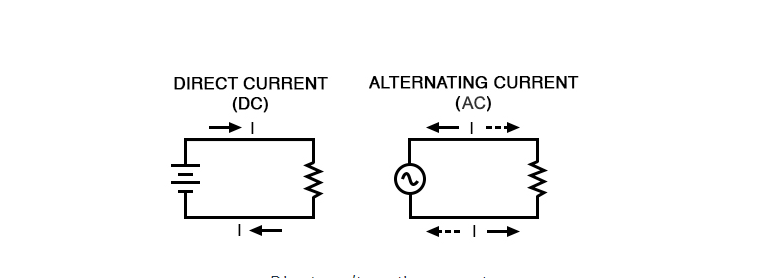
Image Credits: allaboutcircuits.com
The most common household appliances run on AC. On the flipside, the supplied AC power to the building or residence must be changed to DC to power the device. A rectifier is the one that does DC conversion for personal computers since they operate on DC. Here the rectifier is called as a normal power supply.
Advantages of Inverter Generators
We recommend inverter generators for the reasons listed below.
1. Fuel Efficiency
Through this generator, the engine-acceleration is automatically regulated only the power needed is outputted. Hence, the gas tank is of less volume; the fuel cost decreases; and pollution emission is low. On the other side, the speed and the frequency of conventional stationary machines are respectively 3,600 rpm and 60 Hertz with every rotation. Fuel efficiency of the inverter generators keeps their operating frequency at the level of the demand load and at lower rotational speeds.
2. Output Power Quality
Nowadays electricity of the same reliability is produced by these generators as from the line power. Consequently, it is more relevant effective in powering small appliances that gam es desk lights, mini air conditioners, and mobile phone chargers. Whereas on the other side, conventional generators produce power that is better for the electricity system of big appliances and central air conditioning.
3. Portability
The inverter power supply is portable because of the generator’s small size and lightweight. Despite its tiny size, such device is quite effective. Campers, RV owners, also recommend these generators for travel trailers because they carry them along all the time since standard generators are heavy and hard to transport. As you cannot imagine taking one along on a fishing holiday, they are nuanced to the task.

Image Credits: thomasnet.com
4. Parallel Capability
If you need more energy you can connect a second inverter generator to the other. By installing several mini-generators instead of one large, heavy conventional generator can be eliminated.
5. Running Quietly
Unlike conventional generators, they are less noisy since the engine does not work in full power. The loudness should be similar to that of a natural voice. The fact that you can have a generator without a headache will make the one to carry it on your trip more appealing. If you use a generator at home during a power failure, it won’t disturb your neighbors.
Why Are People Choosing Inverter Generators Over Traditional Generators?
Let’s stop considering the conventional and outdated inverters as they do not posses the capacity to boot generator-enabled gadgets.
Here, we will discuss these two machines produce power effectively.
The inverter generator is different from the conventional one on the basis on many particulars, such as the amount of your budget, the number of appliances and the type of appliance which will be connected.
Here are the points that the portable energy devices will be discussing, and how they differ.
a) The Difference in Noise Levels Between a Generator and an Inverter
The main difference is the noise levels between an inverter generator and a traditional generator. Generators typically run at rotation speeds of 3,600 rpm to produce power. As a result, the engine’s speed has to remain constant so that it can use the electricity. However, the inverters use microprocessors to regulate the output of power. In addition, the device offers lower noise level since it is controlled in accord with the load that is applied by the user. Opt for the top-rated silent models if you are keen on the quiet generators.
b) Parallel Operations
What doubles the capacity for power in most inverter generators are the two identical machines put together. Using multiple small inverters working together also gives you the same power output as the one massive generator would. This capability is absent in conventional turbines. If generators are identical, they can not be linked together and they need specific connection cables to connect their outputs.
c) Dimensions, Weight, and Mobility of Generator Inverters
Most inverter generators are so small for such power output. In contrast to that, the inverter generators can be convenient when you need electricity in your car for those activities such as hiking or camping. More importantly, they are easy to store and move around..

Image Credits: bluedm.com.au
However, most of the generators are installed on frames and wheels because of their loud, big, and heavy nature. Nevertheless, they might as well be mobile, but they do not have the benefit of being light, quiet, and compact.
d) Power Quality Produced by an Inverter Generator
Just like the generator which is only an engine working at full throttle to make the wanted frequency no matter how much load there is, the engine has to rev up in order to keep the desired power quantity. The alternator output that has not been processed is connected directly to the load. Generating alternating current (AC) is done by alternators or inverter generators that change direct current (DC) into AC.
First, DC capacitors change the current into AC with the correct voltage and frequency. Then, AC capacitors refine the amplitude of the fluctuation. Consequently, power from inverters is steady and dependable, being unrelated to the engine speed. Furthermore, inverter generators make much “cleaner” electricity than the conventional generators. This clean electricity is very similar to the usual electricity that your electric company provides.
What Is the Significance of Utilizing a Cleaner Source of Energy?
Modern devices, including television screens, mobile phones, and PCs, are processed by microprocessors that are sensitive to power quality. This could lead to the misfunctioning or maybe to the damage of the gadgets if they draw power from an unclean source. Thus, the clean power delivered by inverter is appreciated by any that requires sensitive electricity.
e) Price Contrast
Generators will benefit you only as long as you need a considerable output of power. Conventional generators still have a low purchase price and need less maintenance despite that. Furthermore, these parts are easily sourced at affordable prices thanks to the simple design and operation.
While inverter generators provide increased control and higher fuel efficiency, lower noise and portability, the inverter generators are also a little more expensive. You need to know the costs of each part and what the budget allows.
f) Runtime and Fuel Efficiency of Inverter Generators
Generally, generators are designed according to what power is necessary in order to keep the electrical equipment operational. Hence, size of the unit offers the first consideration when using the generators.

Image Credits: bluedm.com.au
Nonetheless, like inverters, generators don’t require big fuel tanks and they are being made to be small and lightweight. On top of that, the inverters are constructed with advanced fuel-efficient engines that convert the amount of power to match the amount of load required while significantly cutting fuel consumption resulting in shorter working periods.
For the majority of customers, working hours of around 10 hours are more than satisfactory. In addition, the machines not only use 40% less fuel but also lowers exhaust emission rate.
Various Inverter Types
Inverter generators are classified as either closed-frame or open-frame. The quiet and compact generator inverter models are of a closed frame design. Although the acoustic effect is not completely eliminated by this insulation, since the shell absorbs noise, the effect is still far from what you would hear outdoors. Henceforth, they would be easy to carry burden and used for smaller packs.
An enclosure insulation is an important component of any inverter generator. Since open-frame models lack this insulation, they are noisier than closed-frame ones, but quieter than regular generators – by approximately 50% percent. The electricity this open-frame inverter generates is as green as the electricity from closed-frame inverters and they can handle heavier loads.
a) Powerful Inverter Generators
The large inverter generators are frequently heavy ones, about 250 pounds or even more (wheels included). It’s a generator that provides enough power to your house yet is inappropriate for carrying it to a party for a tailgate game. They at least produce 5,000 watts (at 220 volts).
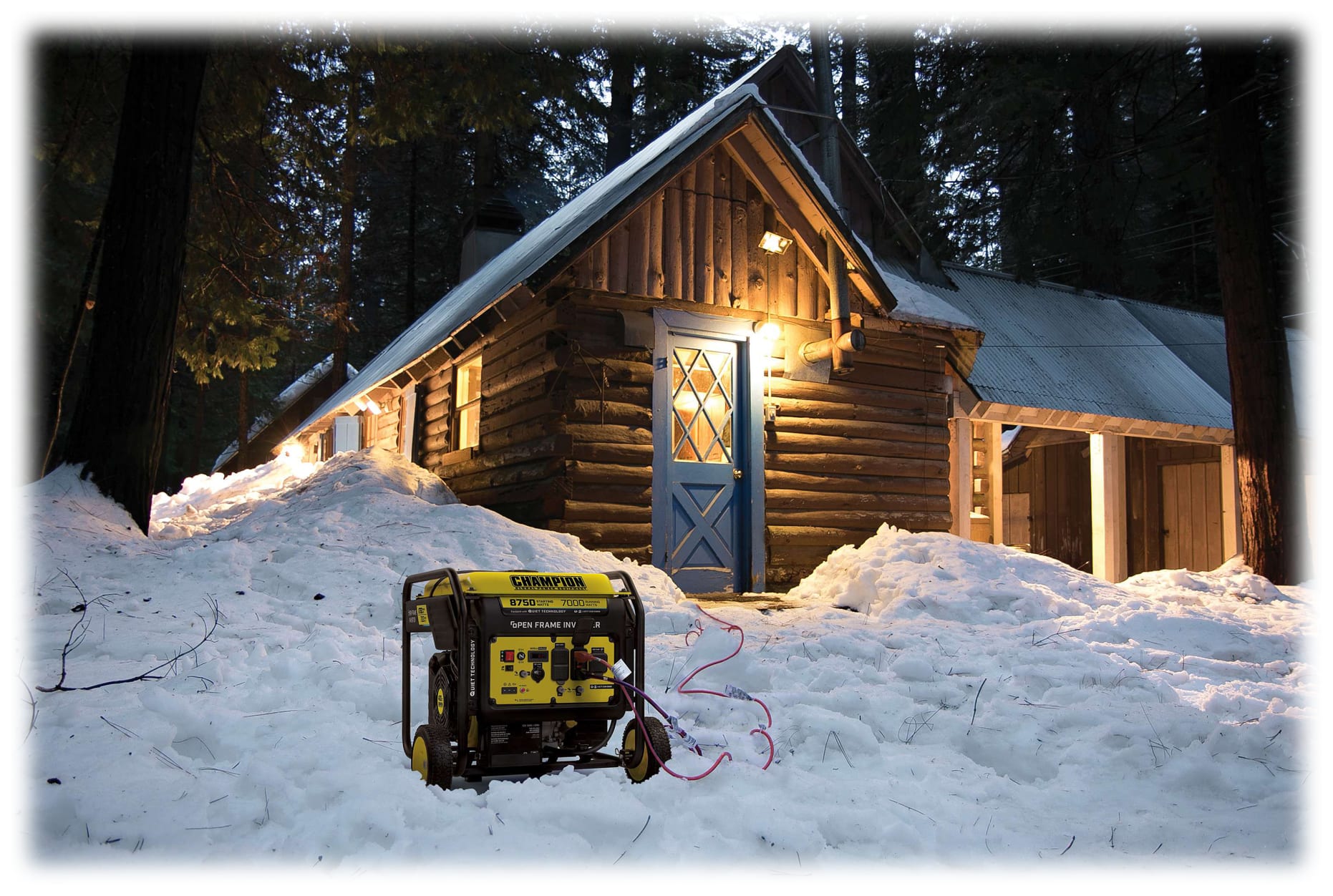
Image Credits: basspro.com
The attachment to the electrical system can be direct also through a transfer switch which CR recommends. Powering your entire residential circuits is not a difficulty because of this phenomenon. Therefore, there is no need to use separate plugs and extension cords for power gadgets.
b) Inverter Generators of Medium Size
That is at least 80 pounds but, plus, these have wheels and can be mobile. The inversers output the products that are 2,500 and 5,000 watts but get a dissonant sound when they are connected to the transfer panel board. Thus, instead of these devices working via battery, you plug them directly into the generator, and that can prove dangerous, especially when observing safety measures is not the priority.
Such a dimension can be claimed as an optimal one for campers. Such batteries hence are capable to separate for unhooking and transporting away from the RV but still, have power to charge replacements like a microwave or a toaster.
c) Inverter Generators for Outdoor Use
They must be equal to carrying with one hand and weight more than 60 pounds. People, who struggle to understand what can be run off a 2000-W generator, should know, that most recreational types have a 2,500 watt maximum output rating, while higher wattage items, such as heaters, are usually not included in this power range.
Recreational inverter generators can be as small and portable as they are for tailgating or camping, and they can be sizable and reliable enough to be used in situations like a storm.
Featured Image Credits: forconstructionpros.com

